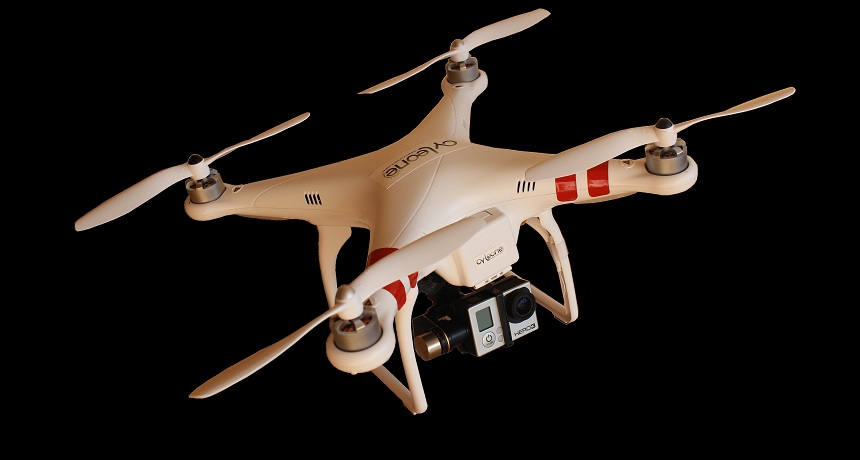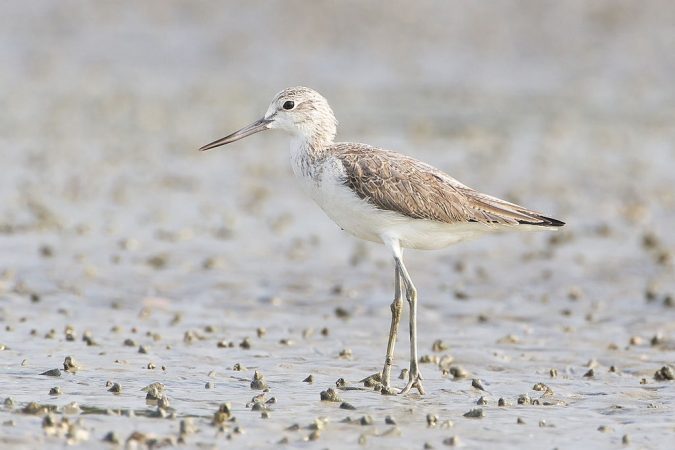These drones are for the birds
Scientists flew robots at our feathered friends to see how close they could get

Drones like this one — called a quadcopter — can get close to wild populations of birds, a new study shows. This could be a great thing for bird research.
Cyleone
Could flying drones near birds make them flighty? To find out, a group of researchers has just flown a robot at hundreds of birds. To their great surprise, those drones usually don’t ruffle a bird’s feathers at all.
The results show that drones could help scientists get a close up view of birds — without ever setting foot near their nests.
Drones— aircraft that carry no pilots — are more than the little robots delivering your future Amazon package. Scientists use them to count animal populations, “sniff” for sulfur near volcanoes and even to deter poachers.
The robots present a great opportunity for bird researchers and for at-home drone pilots. “They can reach areas such as wetlands or mountains or cliffs,” explains David Gremillet. “That’s a real bonus.” Gremillet is an ecologist at the National Center for Scientific Research in Montpellier, France. But as these little flying machines get more popular, scientists have worried about how animals might react to being spied on from the sky.

That’s why Gremillet and his group of researchers flew a quadcopter drone at more than 200 birds. This is a small robot with four sets of helicopter blades on the top. Those blades allow it to hover in the air.
The scientists used the drone to sneak up on three different species. First, they approached mallard ducks in a local zoo. Then they flew the robot toward groups of wild greenshanks — a wading bird that prefers wetlands — and a wild flamingos in the Camargue wetland. (This is an area south of Arles in France, where the Rhone River flows toward the Mediterranean Sea.)
For each flight, a trained drone pilot carefully took up position between 50 and 100 meters (164 to 328 feet) from a group of birds. The pilot directed the copter, equipped with a camera, toward the birds. One time the drone approached quickly. Another time it would zoom over slowly. The scientists also experimented with angle. The drone might approach from near eye level. Other times it would come in from higher. It might even drop down from directly over the birds’ heads.
Each time, the scientists watched carefully from a distance to observe how the birds reacted. If the flying robot did not bother the birds, the animals wouldn’t move. But when the drone got too close, the birds might move their heads and tails, eventually walking off or swimming away. And if the machine was too disturbing, the birds just took flight.
In fact, most times the birds largely ignored the robots. Four times in every five, the drones could fly to within four meters without the birds flicking a feather. Wild birds are very nervous. So Gremillet said his team was extremely surprised to get as close as it did.
The birds were most likely to stay calm when the drones approached the birds at eye level or from an angle. Approaching from directly above the birds disturbed them most. Gremillet says that this might be because an object coming in from directly above looks more like a predator.
Getting an aerial robot even four meters (13 feet) away is very exciting, says Juan Jose Negro. He’s an evolutionary biologist who directs the Doñana Biological Station in Seville, Spain. “It’s like Big Brother; you’re right there,” he says. “If you use a camera and sensors you could take images, test the temperature and the air pressure.” Equipped with microphones, drones could even record sounds the birds make. With these spy technologies, he says, “It’s just like being in the middle of the flock. I’ve never been that close.”
The next step is to study how birds react to different drones and in different situations. The machine the scientists used for this study was very quiet. The sound of its motor, about 60 decibels, was as loud as a normal conversation. The birds might not have tolerated noisier drones getting as close to them.
Shape also might be important. The quadcopter is boxy. Fixed-wing drones look more like airplanes — and like other birds. This could present problems, Gremillet notes. “Fixed-wing drones make less noise,” he says. “But their shape might remind some birds of predators. It’s important to test their impact.”
While the birds appeared to tolerate a visiting drone, this should not give people license to start flying their favorite robots towards animals for fun. Studies like these help scientists figure out how we can best use aerial machines to watch wildlife without disturbing their normal behavior.
Follow Eureka! Lab on Twitter
Power Words
(for more about Power Words, click here)
aerial Of or taking place in the air.
autonomous Acting independently. Autonomous vehicles, for instance, pilot themselves based on instructions that have been programmed into their computer guidance system
drone A aircraft or missile that carries no pilot aboard. A drone may fly autonomously, along a preprogrammed path or under the control of a pilot on the ground. A drone also may be called an unmanned aerial vehicle (UAV).
ecology A branch of biology that deals with the relations of organisms to one another and to their physical surroundings. A scientist who works in this field is called an ecologist.
fixed wing The term for a type of aircraft whose wings generate lift without having to move. Most jets and passenger planes fall into this category.
poach (in ecology) To illegally hunt and take a wild animal. People who do this are referred to as poachers.
population A group of individuals from the same species that lives in the same area.
predator (adjective: predatory) A creature that preys on other animals for most or all of its food.
stress (in biology) A factor, such as unusual temperatures, moisture or pollution, that affects the health of a species or ecosystem. (in physics) Pressure or tension exerted on a material object.
surveillance A term for watching or keeping track of the behavior of others, usually in a stealthy manner or from a distance.
thermal Of or relating to heat.
wetland A low-lying area of land either soaked or covered with water. It hosts plants and animals adapted to live in, on or near water.